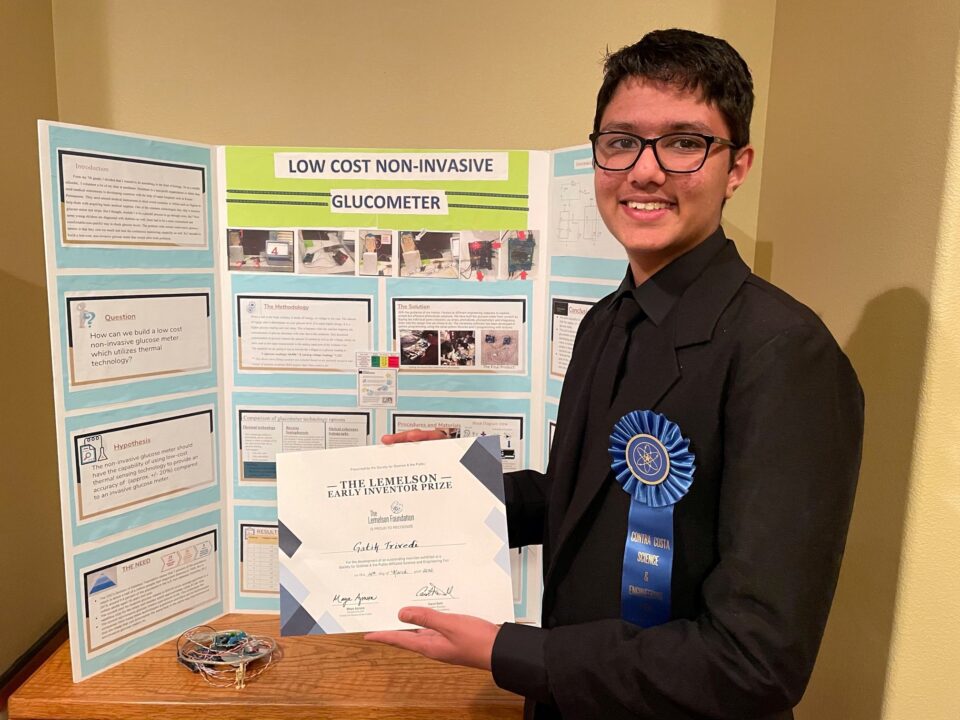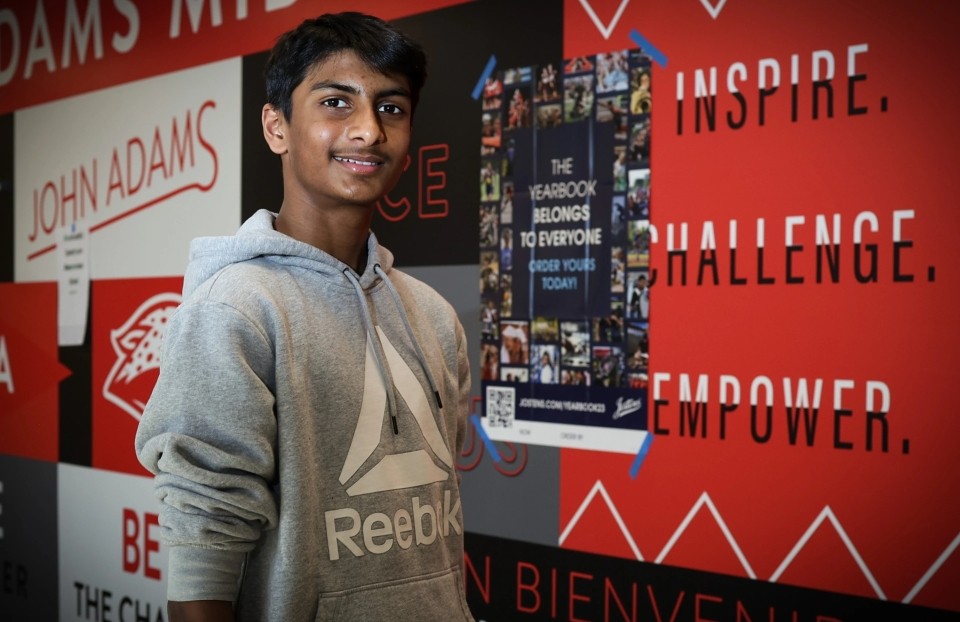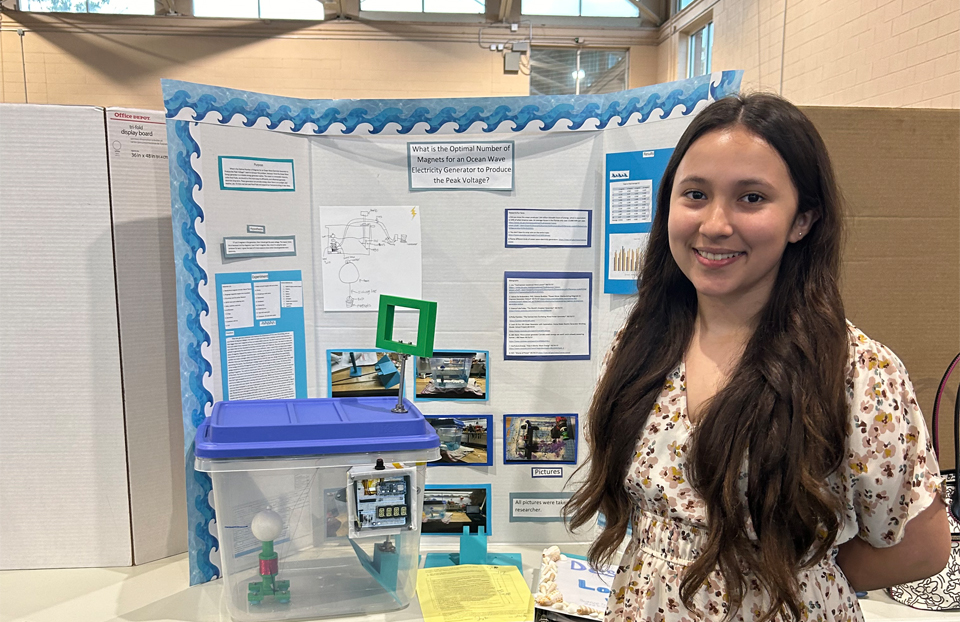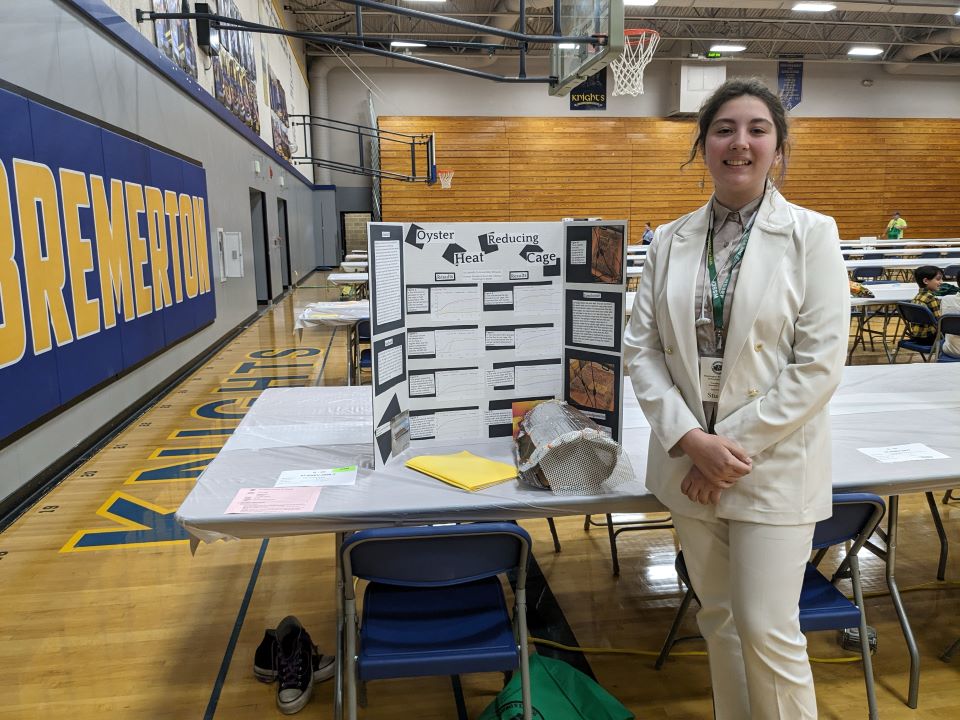Lemelson Foundation, Young & Amazing
Young inventor works to make needle pricking for diabetics obsolete

Last year, The Lemelson Foundation gave $100 awards to outstanding young inventors in Society Affiliate Fairs with middle school participants around the country. This is the second year of a three-year grant where young innovators will be recognized. The prize was especially created to reward young inventors whose projects exemplify the ideals of inventive thinking by identifying challenges in their communities and creating solutions that will improve lives.
It was while volunteering his time at the humanitarian aid organization, Medshare, that San Ramon, California middle schooler, Gatik Trivedi, first became interested in improving the quality of life of diabetics. There, he observed that packages of critical medical equipment and supplies sent to developing countries always contained invasive glucose meter strips. He found himself thinking, “Wouldn’t it be a painful process to go through that every day?”
Well ask any diabetic and they’d probably say yes. With the management of type 1 and type 2 diabetes in both adults and children, comes the monitoring of blood sugar levels. The cadence of this monitoring varies patient to patient. For some it means pricking their finger numerous times a day to ensure that they are not hypo- or hyperglycemic between meals or exercise, while others test levels once a week. Studies have shown that more than half of patients aren’t testing their blood sugar frequently enough, due to the inconveniences and pain currently involved. Though diabetics are used to the discomfort that comes with the prick of a needle, it doesn’t mean they wouldn’t jump at the chance for an affordable, painless and more convenient solution.
“The problem with noninvasive glucose meters is that they cost too much and lack the continuous monitoring capability as well,” Gatik explains. On top of that, meter and diabetic supply coverage can vary by insurance company. Some insurance companies don’t cover the cost of noninvasive glucose meters the way they would the cheaper and more traditional invasive ones.
Given these drawbacks, Gatik built a low-cost, accurate non-invasive glucose meter that could potentially replace the more traditional glucose monitoring tools. What makes Gatik’s portable, non-invasive blood glucose monitoring device unique is its use of near-infrared sensors and reliance on thermal technology. “My design uses the heat expelled by the normal cells in the oxidation process and turns that reading into a glucose measurement.” Gatik’s user-friendly technology, which he devised after doing an extensive literature and market review, can be placed on the earlobe. The noninvasive meter clasps around the person’s ear and is constructed to use a photodiode and photoemitter to record and send voltage signals to an Arduino process board. Those signals are then transformed into glucose-level readings on a computer.
As anticipated along the path from conception to invention, Gatik faced a fair share of obstacles and critical questions. He tells the Society, “While researching, I learned about various methodologies to measure glucose levels. For me, the biggest challenge was picking the right methodology for measuring glucose. I performed an analysis based on several factors including feasibility, product availability, complexity, affordability and ease of use, and decided to pursue thermal technology to measure glucose levels in my invention.” Another goal was reducing the error rate of his glucose meter as much as possible. By using high-quality parts and efficient coding, Gatik was ultimately able to reduce the error rate to approximately +/- 20%.
For his work, Gatik placed first in the Contra Costa Science Fair where he was also recognized with the Lemelson Early Inventor Prize. Gatik tells the Society that he’s keeping active during the pandemic by working on his research from home and interacting with friends; he encourages his peers to do the same.
“One thing that the pandemic has taught me is to remind myself to stay calm and carry on with my work or research, at the same time also staying socially active,” while abiding by social distancing measures and wearing masks. “Having a positive outlook is key and not losing focus is something that keeps me aligned with my goals.”


